A project submitted for the GitHub + DEV 2023 Hackathon. This tool assists maintainers by extracting labels from the bodies of GitHub issues.
Category Submission
Maintainer Must-Haves
App Link
You can find Issue Labeler here. Want to learn more about how to use Issue Labeler? Check out our Usage Guide.
 dhhruv
/
ISSUE-LABELER
dhhruv
/
ISSUE-LABELER
This tool is an aid for open-source maintainers. It is designed to automatically extract labels from GitHub issue descriptions and add them to the issue. This means maintainers do not have to manually label issues, reducing their workload and ensuring that issues are labeled accurately and consistently.
ISSUE-LABELER: Automated Issue Labeling for GitHub
A project submitted for the GitHub + DEV 2023 Hackathon. This tool assists maintainers by extracting labels from the bodies of GitHub issues.
Category Submission
Maintainer Must-Haves
App Link
You can find Issue Labeler here
Description
This tool is an aid for open-source maintainers. It is designed to automatically extract labels from GitHub issue descriptions and add them to the issue. This means maintainers do not have to manually label issues, reducing their workload and ensuring that issues are labeled accurately and consistently.
Screenshots
These screenshots demonstrate the Issue Labeler in action on five different issues. Once each issue is created, the GitHub Actions workflow triggers and the tool starts its work.
Link to Source Code
You can see how we built Issue Labeler by checking out the source code
Background
This project was…
Description
This tool is an aid for open-source maintainers. It is designed to automatically extract labels from GitHub issue descriptions and add them to the issue. This means maintainers do not have to manually label issues, reducing their workload and ensuring that issues are labeled accurately and consistently.
Screenshots
These screenshots demonstrate the Issue Labeler in action on five different issues. Once each issue is created, the GitHub Actions workflow triggers and the tool starts its work.
Link to Source Code
You can see how we built Issue Labeler by checking out the source code
 dhhruv
/
ISSUE-LABELER
dhhruv
/
ISSUE-LABELER
This tool is an aid for open-source maintainers. It is designed to automatically extract labels from GitHub issue descriptions and add them to the issue. This means maintainers do not have to manually label issues, reducing their workload and ensuring that issues are labeled accurately and consistently.
ISSUE-LABELER: Automated Issue Labeling for GitHub
A project submitted for the GitHub + DEV 2023 Hackathon. This tool assists maintainers by extracting labels from the bodies of GitHub issues.
Category Submission
Maintainer Must-Haves
App Link
You can find Issue Labeler here
Description
This tool is an aid for open-source maintainers. It is designed to automatically extract labels from GitHub issue descriptions and add them to the issue. This means maintainers do not have to manually label issues, reducing their workload and ensuring that issues are labeled accurately and consistently.
Screenshots
These screenshots demonstrate the Issue Labeler in action on five different issues. Once each issue is created, the GitHub Actions workflow triggers and the tool starts its work.
Link to Source Code
You can see how we built Issue Labeler by checking out the source code
Background
This project was…
Background
This project was inspired by the need to streamline the workflow for open-source maintainers. We observed that labelling issues was a recurring task that could be automated to save maintainers time and effort. We chose to participate in the Maintainer Must-Haves category for the GitHub + DEV 2023 Hackathon, as we believed this was a valuable tool that could assist many maintainers.
How We Built It
We utilized GitHub Actions to create a workflow that triggers whenever a new issue is created. This workflow runs a script that analyzes the issue description and extracts labels based on predefined keywords. The script then adds these labels to the issue.
We also made use of GitHub Codespaces to develop and test our code. This made it easy for our team to collaborate and ensured that we had a consistent development environment.
During the project, we learned a great deal about GitHub Actions and Codespaces, including how to create custom workflows and how to set up a development environment in Codespaces.
Team
Permissive License
This project is licensed under the MIT License - see the LICENSE file for details.
Additional Resources/Info
Want to learn more about how to use Issue Labeler? Check out our Usage Guide. You can also contribute to this project by submitting a pull request or opening an issue on GitHub.









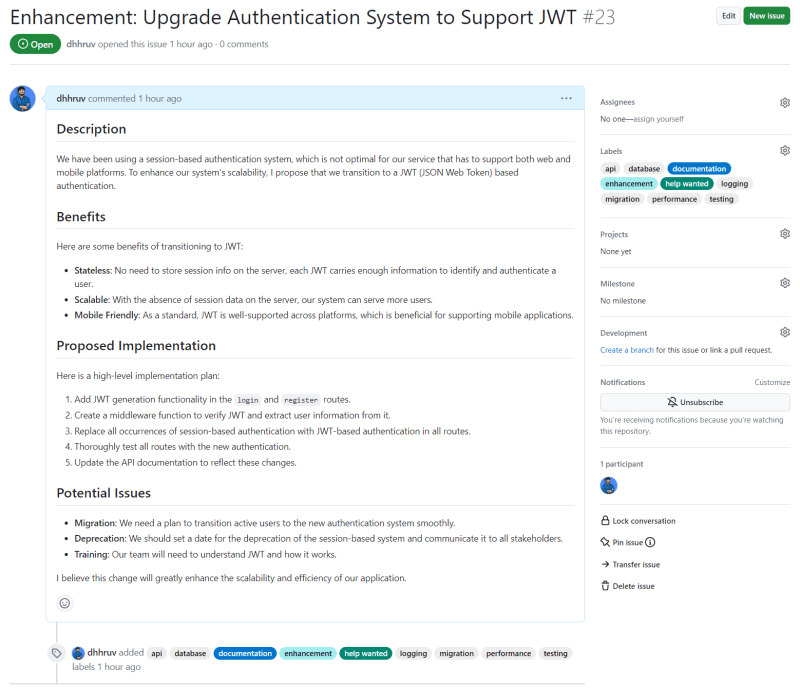
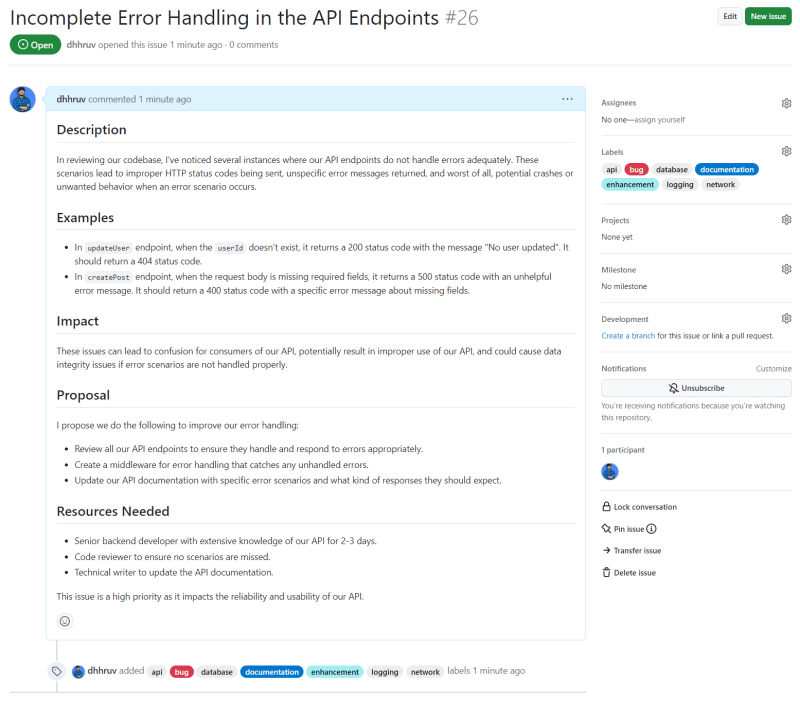
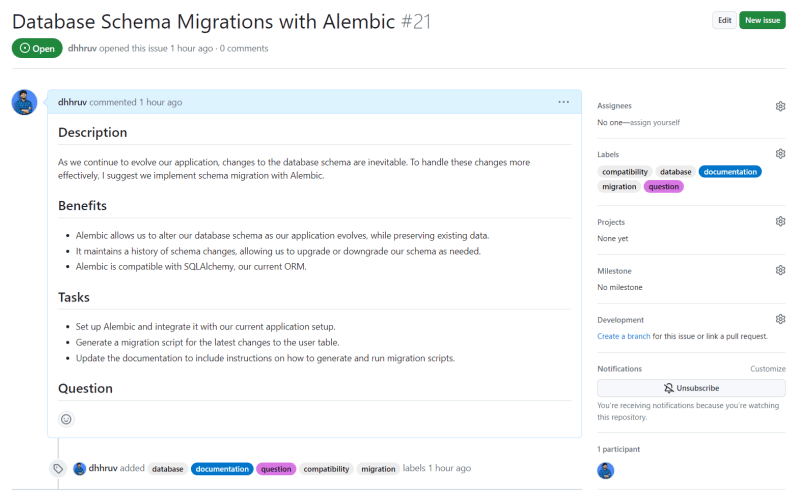
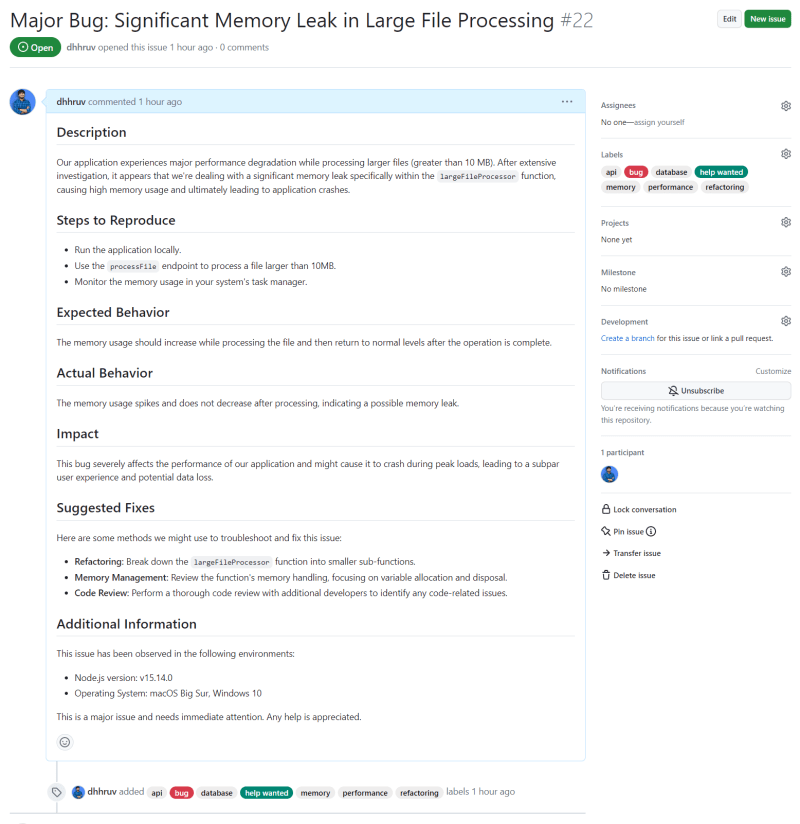

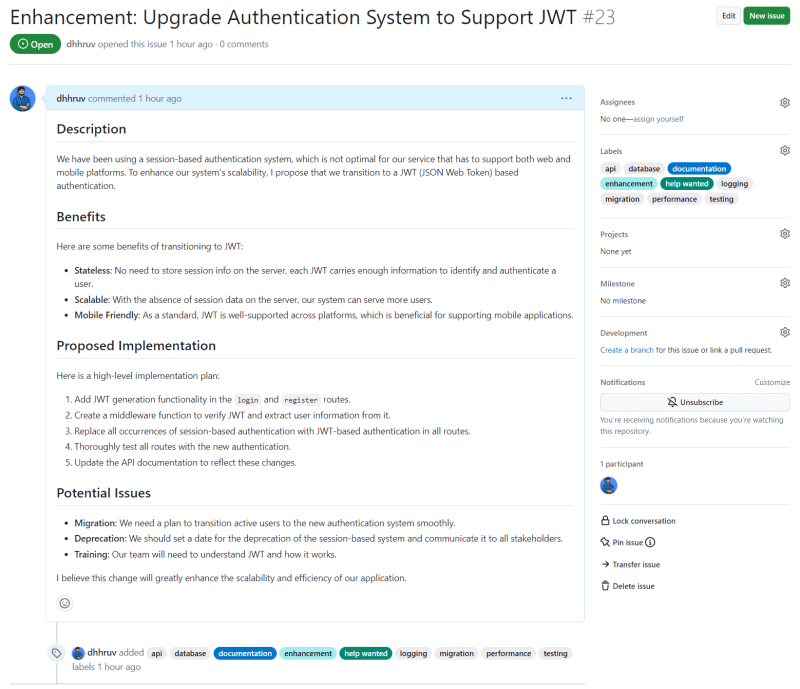

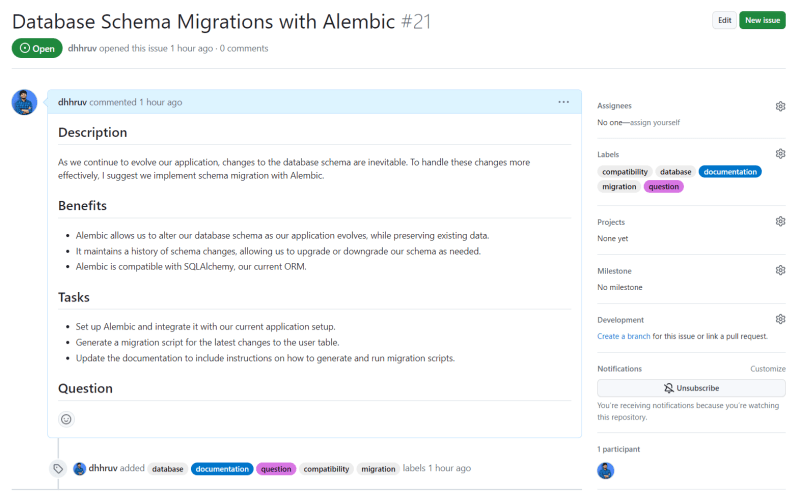
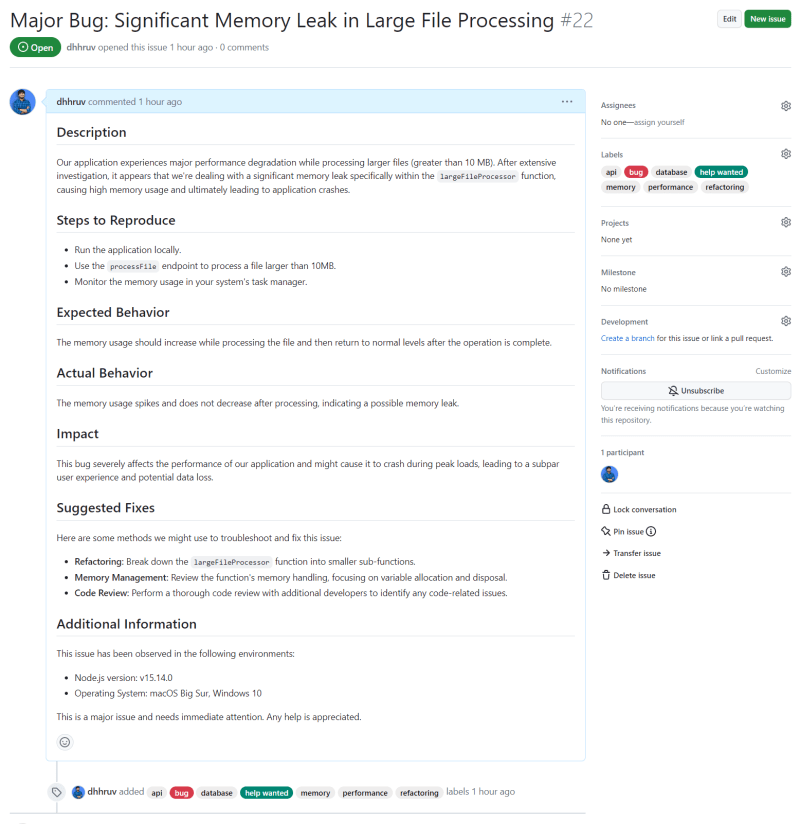


Top comments (0)